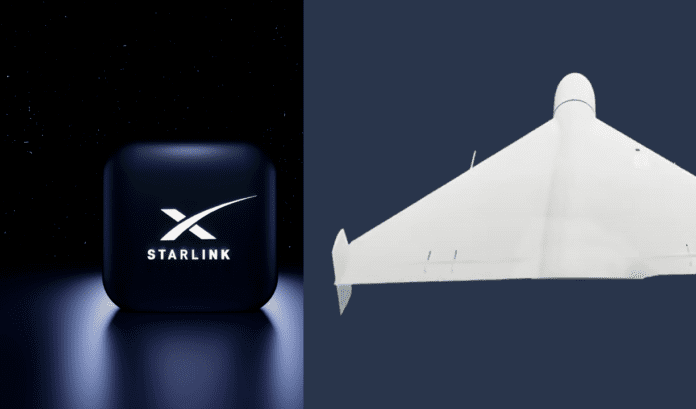This post is also available in:
 עברית (Hebrew)
עברית (Hebrew)
Ukrainian defense forces have raised significant concerns following claims that Russia has begun outfitting its Geran 2 attack UAVs with SpaceX’s Starlink satellite communications technology. This assertion emerged after Ukrainian forces intercepted and captured one of these UAVs during an operation in late September.
According to the Ukrainian portal Defense Express, the debris from the intercepted UAV displayed markings indicative of Starlink equipment. Images released by the portal purportedly show parts labeled with the Starlink name, though these claims have yet to be independently verified. Ukrainian authorities are reportedly investigating how Russian troops might have gained access to Starlink technology, particularly as the images do not reveal any identifying serial numbers.
The Geran 2, mostly known by its Iranian name, Shahed 136, is an Iranian-designed suicide UAV capable of delivering lethal strikes from a distance. It can reach speeds of approximately 185 kilometers per hour, has a range of up to 2,200 kilometers, and a payload capacity of 40 kg. It can also be repurposed for reconnaissance by replacing explosives with a camera.
If the claims regarding Starlink integration are accurate, the implications for Russian military operations could be profound. The main advantage would be the ability to adjust mission parameters mid-flight, enhancing the UAV’s tactical versatility. Additionally, the capability to transmit real-time data back to operators could significantly improve reconnaissance effectiveness.
Reports have surfaced previously suggesting that Russian forces may have accessed Starlink technology through black market channels. Earlier this year, the Pentagon confirmed that it was working with SpaceX to identify and disable illegally acquired Starlink terminals in Russian possession.
The potential use of Starlink communications in Russian UAVs heightens security concerns for Ukraine. As UAVs play an increasingly pivotal role in the ongoing conflict, the capability to enhance their functionality through advanced communications poses a serious challenge.
Furthermore, the recent unveiling of the Shahed-136B, an upgraded variant with a range of 4000 km and a larger warhead, underscores the problematic nature of the ongoing collaboration between Iran and Russia in supplying advanced military technologies.


























